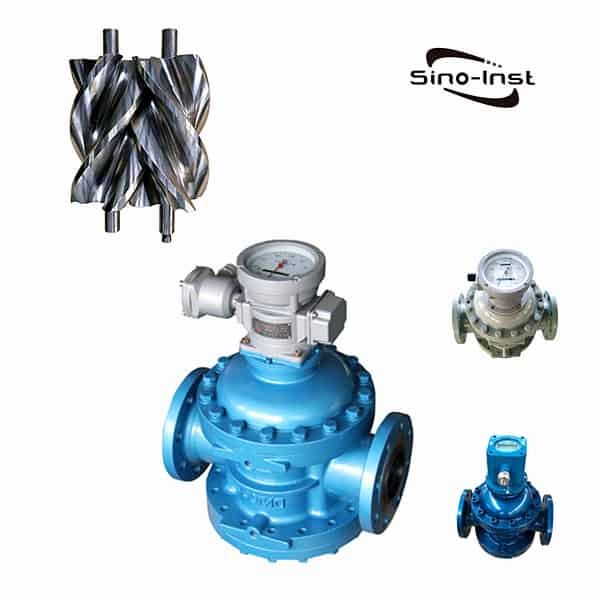In this final portion of the discussion, we will go over the Doppler flowmeter in addition to the transit time flowmeter and the transit time meter. The vast majority of the time, they will make use of the frequency that is applied to the mechanical flow meter of the gas itself. After that, they will calculate the change in frequency offset as well as the amount of time that is required for the frequency to propagate from one sensor to another. This is done so that they can determine how long it takes for the frequency to travel from one sensor to the next.
Even without looking at a complete list, it is obvious from the list that describes the various technologies that are utilized in the industry that there is not enough time in this content to do this
This is because the list describes the various technologies that are utilized in the industry
How exactly do you decide which flowmeter to use, and how do you determine which one will give you the best results for your particular application
Let's put forth some effort to ensure that this content includes some vital details by making an effort to provide them
Let's start by talking about the differential pressure mechanical flow meter components that are present in the system
Differential pressure gauges are typically utilized throughout the entirety of industry due to the fact that they are simple to install and are well-known differential pressure elements. This is because differential pressure gauges can accurately measure both positive and negative pressure. This is due to the fact that differential pressure gauges are capable of providing accurate readings for both positive and negative pressure. Since the beginning of the industrial revolution, these differential pressure elements have been used all over the place in a wide variety of different settings. In point of fact, the first differential pressure flowmeter was adopted by the industry in the 1940s, and ever since that point, standards have been developed in accordance with these kinds of flowmeters. Citation needed Citation needed Citation needed Citation needed Citation needed Citation neededIt can be put to use in virtually any application you can think of, including wedge flowmeters, orifice plates, and venturi tubes, to name just a few of the more common ones, to name just a few of the more common ones.
It is distinguished by a number of admirable qualities as well as a profound understanding of the subject matter. This is typically the case as a direct result of the fact that they are put to use in a wide variety of different ways within the manufacturing sector. The price has not changed significantly from when mechanical flow meter was first stated. Orifice plates are well-known for the low cost at which they are sold and the ease with which they can be obtained in a variety of contexts.
An orifice plate could be an excellent choice as the mechanical flow meter control device in an application that involves differential pressure if the mechanical flow meter density is able to remain relatively constant over the course of the application. Both the capabilities of a wedge flowmeter and those of a venturi tube have the potential to undergo further development. A venturi tube has the potential to offer a greater reduction ratio or range. Both of these scenarios are entirely conceivable. Additionally, rotor flowmeters and variable area flowmeters both have some use in commercial environments. Field flowmeters, purge flowmeters, and spray flowmeters are examples of typical applications for this type of flowmeter. Uses that are typical for this kind of software include applications that are not critical to the operation of the company and applications that do not require a high level of accuracy or output. In addition to being well-known and simple to comprehend, variable flowmeters have been utilized in a variety of commercial contexts for a considerable amount of time. This is because variable flowmeters have been able to accurately measure rates over a wide range of conditions. The electromechanical flowmeter is the type of flowmeter that will be the focus of the next discussion that we have planned for ourselves. This conversation will take place in a little while.

Even though electromechanical flowmeters are typically still relatively new to industry, a significant number of standards have been written around them, and this trend is expected to continue in the foreseeable future. Faraday's law. People have a very good understanding of what mechanical meters are and what they entail when it comes to measuring flow. The use of coriolis flowmeters, which can be used for calculations or density correction in applications that require a certain density, has become very popular over the past 30 or 40 years. These flowmeters can measure velocity as well as density. In the last 30 or 40 years, coriolis flowmeters have become very popular, and eddy current flowmeters have very good qualities. Both of these types of flowmeters have very good qualities. Each of these two varieties of flowmeters possesses a number of beneficial qualities. One of the technologies that is used in industry is called a Coriolis flowmeter, and it is one of the technologies that is both one of the most recent and one of the technologies that is most widely understood. Today, we are going to talk about mechanical devices such as turbine meters, vane meters, and positive displacement meters such as elliptical gears and double rotors. These types of meters are used to measure flow. These instruments measure using a displacement in the positive direction.
These are the mechanical devices that are utilized in the process of mechanical flow meter measurement. Flow is measured using these instruments. These instruments are used to measure the flow. In the vast majority of cases, a magnetic field will be present on the mechanical device that the fluid is using for its reciprocating motion. We were able to determine the total number of pulses that are produced by the flowmeter by making use of the magnetic field that is produced whenever the mechanical component of the flowmeter rotates. This allowed us to determine the total number of pulses that are produced by the flowmeter. The turbine flowmeter is constructed using the turbine blade as its primary component. In the case of a flowmeter that uses an elliptical gear, the gear that is housed within the flowmeter itself has the shape of an ellipse. Mechanical devices also have good characteristics because of the lubricity of the hydrocarbons themselves, and also because of the fact that these devices typically have a long life in flows of this nature. Both of these factors contribute to the fact that mechanical devices have good characteristics. In particular, positive displacement meters stand out as having a number of qualities that are particularly advantageous. These flowmeters are utilized in applications dealing with liquid hydrocarbons the vast majority of the time. Case in point: Case in point:Positive characteristics can also be attributed to mechanical devices, particularly positive displacement meters. Various other mechanical devices exhibit admirable qualities.







